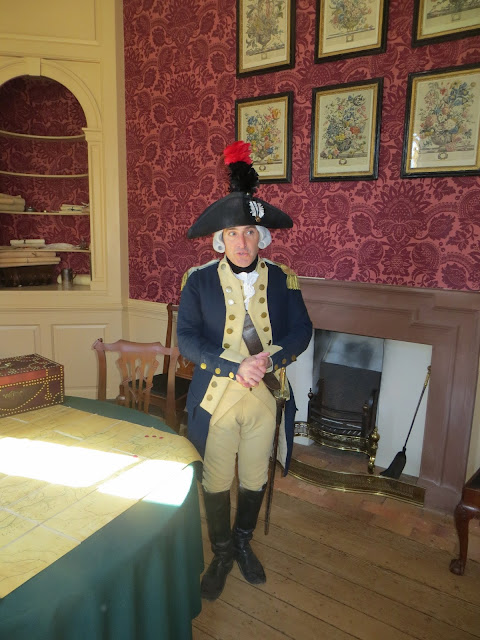Deep Dive into History
June 08, 2017by Steve
One of the benefits of this mobile lifestyle is that we can spend however much time we want in any one place. In one sense, it's a bit like we are always on vacation. We're going new places and seeing new things all the time. But in another sense, it's not. We're just living in different places, and much like the people who already live there, we don't go out and sight-see every day.
 |
| Capitol Building |
When we initially thought about doing this, we thought about living for a month or so at a time in different locations to see how we might like to live there. That way we could get a feel for the place in a way that you don't get in just a one-week stay. But you can't stay for a month at every stop or you'd never get anywhere. We've been on the road for 10 months now, and have been in over 40 different locations. That's an average of about 7 days in any given spot. But we have managed to stay for a month in a few places, including Door County, Wisconsin; Williamsburg, Virginia; and Cedar Key, Florida.
 |
| Governor's Palace |
Our second month-long stay was in Williamsburg, home to Colonial Williamsburg, the largest living history museum in the US. We've been to Williamsburg before, when our children were very young—like 3 and 6. That was 20 years ago or so. We have good friends and relatives who live there, so we decided on a return visit as we worked our way down the east coast in the fall. We spent the month of November there, so we could do a deep dive into experiencing the full history of the place—the kind of deep dive that you can't do with a 3-year-old.
 |
| Young James Madison |
If you've never been to Colonial Williamsburg, consider this strong urging to go. Spend some time there, like a week or more. There probably are a lot of people who spend one day, see many of the major historical buildings, and learn a thing or two about our country's history. But to really appreciate it, you need to commit some time. As a living history museum, it is populated with characters who once lived there. You may encounter Thomas Jefferson, George Washington, or General Lafayette among the more famous residents. But you'll also meet the printer, the blacksmith, the milliner, and the tavern keeper. All of them will be fully in character, and generally won't step out of character. On any given day, there may be as many as 700 people working in CW, and at least 300 will be specific characters.
 |
| The Marquis de Lafayette |
While there are lots of interesting historical buildings in CW, they don't tell too much of a story. It's the people that bring the place alive. Each of these actors playing a character knows a wealth of history about their character—much more than you can imagine. They are basically historians, with detailed knowledge about the person that they portray, dedicating time each week to continuing their research on their character. This is where the gift of having as much time as you want comes in. To fully benefit from the experience, you need to engage the characters, and through asking questions you can learn so much more than a casual brief visit will garner.
 |
| Printer Alexander Purdie |
But remember that while these are actors, they will stay in character. So don't ask questions about current events, as they will have no knowledge of them. We heard people ask Thomas Jefferson what he thought about President Obama. Of course, he didn't know what on earth the question was even about. And try to use period appropriate language. I remember one adult asking George Washington if he did become president, whom he would like to see in his cabinet. Washington responded that he could not think of any person whom he would want to put inside a piece of furniture. (The term "cabinet" to refer to secretaries of executive departments was first used by James Madison in 1793.) And don't call him General Washington when he's only a major. (Insider tip: You can tell by the color of his hair: brown is Major; white is General.) If you're a young child the actor portraying the character will likely help you along with your question, so you learn in the process.
 |
| George Washington (and Jane's cousin-in-law) |
And that's really what history is all about, isn't it? Learning from the past to enlighten our view of the future. If you take the time, there's so much to learn, see and do. If you play your cards right and nobody else is looking, you may get to try your hand at working at a historical craft.Here Jane learns that creating a book was a little more involved in the past.
 |
| At the bookbinder's |




0 comments